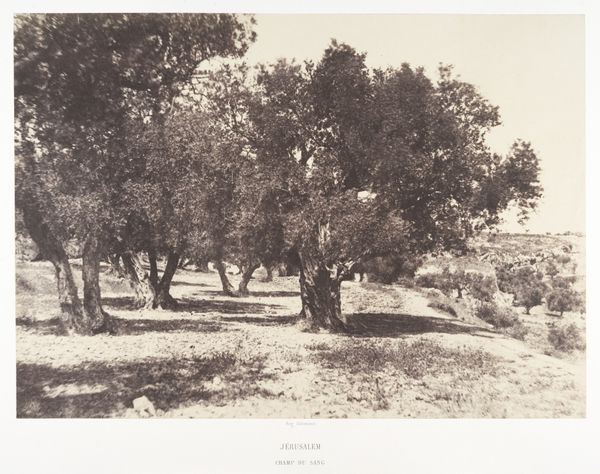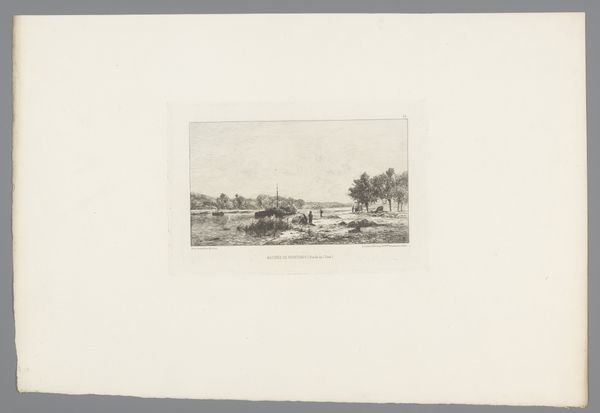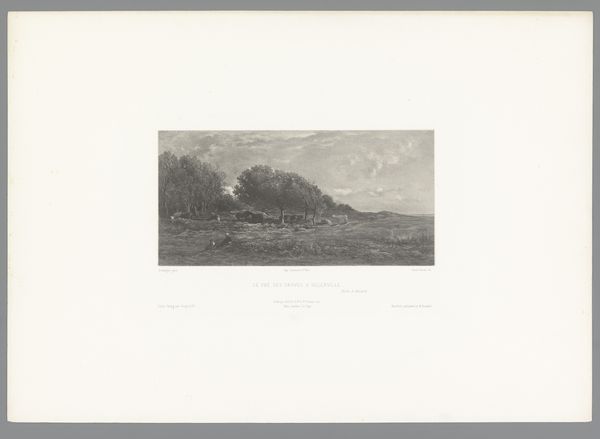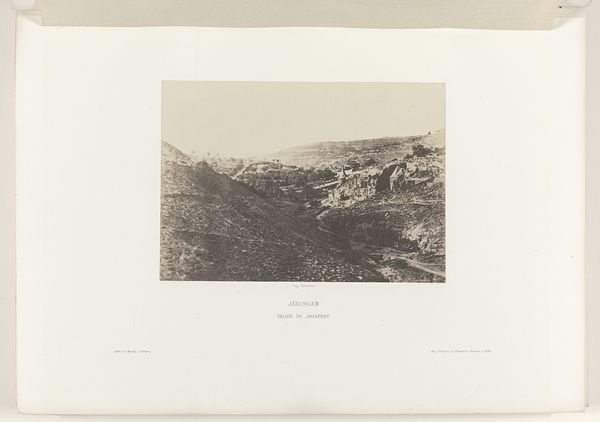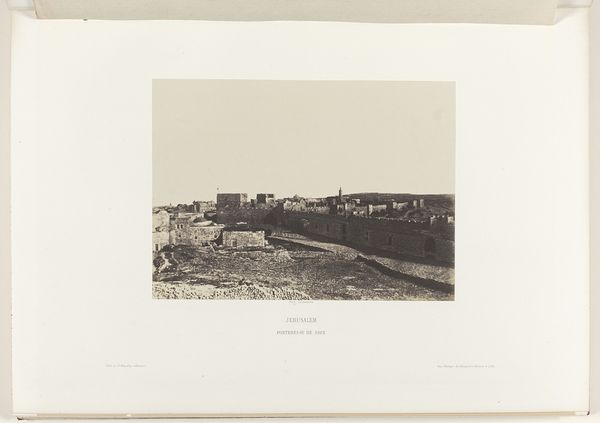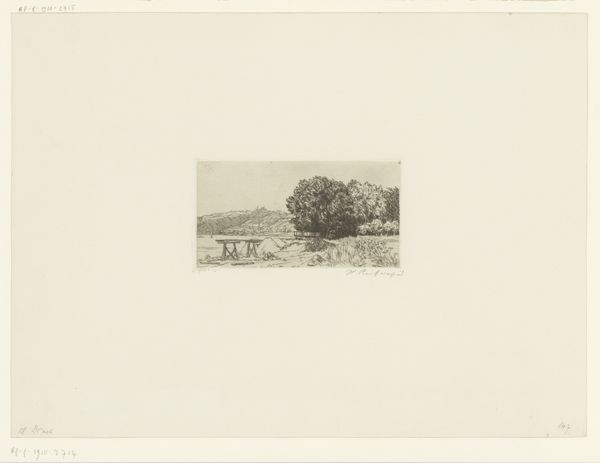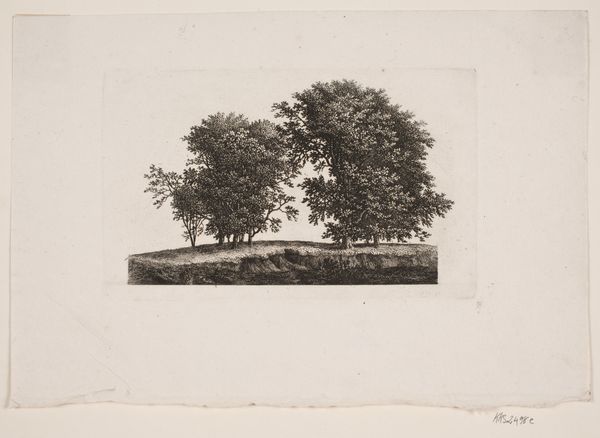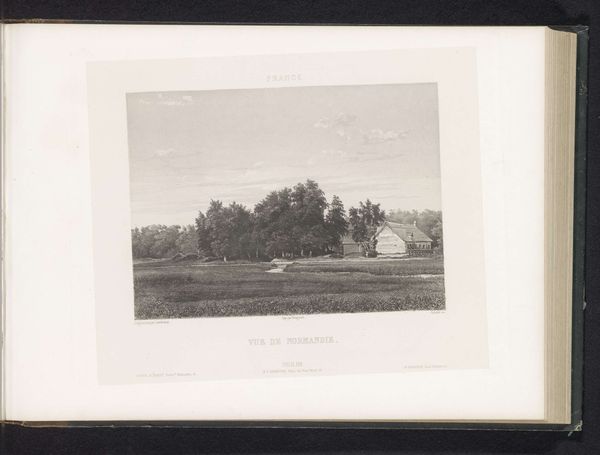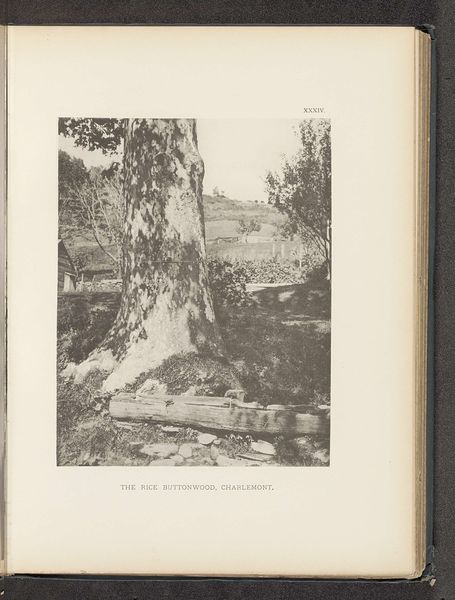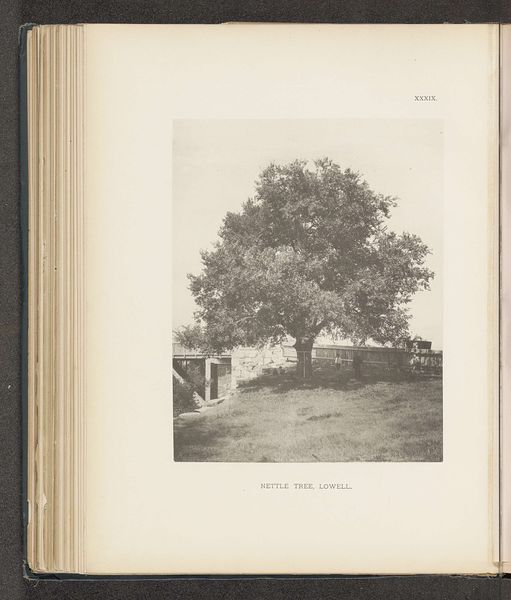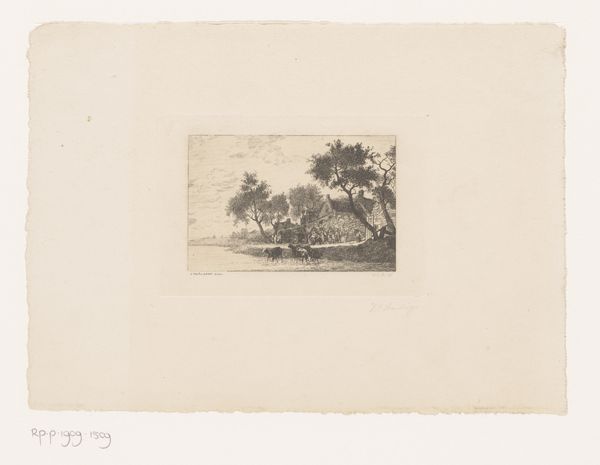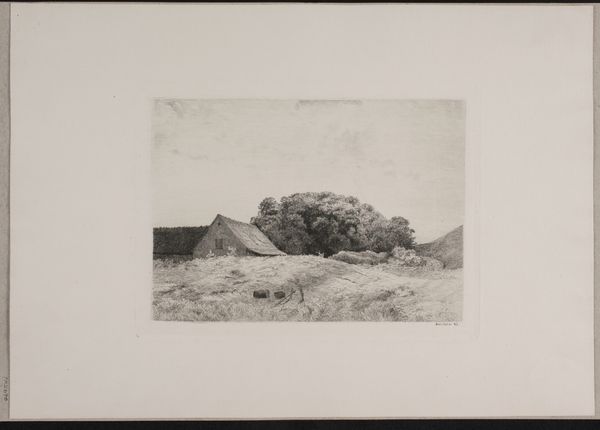
print, photography, albumen-print
#
tree
# print
#
landscape
#
photography
#
orientalism
#
cityscape
#
albumen-print
#
realism
Dimensions: height 166 mm, width 222 mm
Copyright: Rijks Museum: Open Domain
Curator: Auguste Salzmann created this albumen print, titled “Herodespoort te Jeruzalem,” between 1854 and 1856. What do you make of it? Editor: It's strangely peaceful. There's this muted, almost ghostly quality to the light, and it gives the whole scene a sense of timelessness. Curator: The Herods Gate in Jerusalem holds significance as one of the entry points to the Old City. Visually, it might recall, for Western audiences, a tradition of imagery representing entryways to sacred sites, often marking physical and spiritual transitions. Editor: Yes, but consider the materiality. The albumen print process—so laborious and detail-oriented. The amount of work that went into capturing this seemingly simple landscape! This would have involved significant logistical planning. Developing photographs at that time in such location must have required significant support from the French administration. Curator: That’s interesting to frame it in terms of logistics. Salzmann aimed to provide a supposedly accurate depiction of Jerusalem to settle contemporary archeological debates. He traveled to the Holy Land in 1854, endorsed by prominent biblical scholars and theologians. Editor: I’m thinking about that claim of accuracy and its effect on consumption. Were viewers really looking at "truth" or were they consuming an image, carefully crafted through material processes that, themselves, shaped the narrative? The very act of selecting this particular view and framing contributes a very specific, perhaps even colonial, gaze. Curator: It speaks to how early photography, particularly in exotic locales, became inextricably linked with power and authority. Yet the lone tree standing evokes, for me, a symbol of endurance and connection to the land. Editor: It certainly contrasts with the city wall just beyond. But thinking of "power and authority" that city wall marks the edge of something, and I'm sure the image production of the wall and its circulation back home was a form of possession. Curator: An excellent point about that wall… So much more to discuss I suspect! Editor: Indeed. We could ponder these complexities forever.
Comments
No comments
Be the first to comment and join the conversation on the ultimate creative platform.

